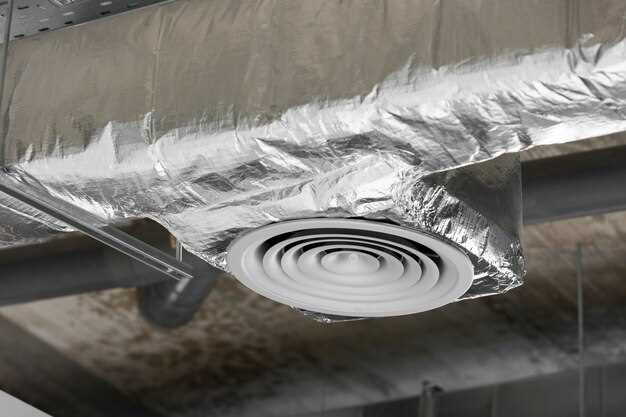
Efficient airflow is essential for maintaining a comfortable and healthy indoor environment. The quality of air circulation directly impacts temperature regulation, humidity control, and overall air quality. One effective way to enhance airflow is by adding functional vents and ducts throughout a space. This article explores the benefits and strategies of optimizing your ventilation system to ensure a steady and effective flow of air.
Properly placed, well-designed vents and ducts play a critical role in distributing air evenly across rooms. This not only ensures that every corner of your home or office is adequately ventilated, but it also minimizes the risk of hotspots and drafts that can lead to discomfort. Moreover, an optimized airflow system can significantly reduce energy costs by enabling heating and cooling systems to operate more efficiently.
Incorporating additional vents and ducts requires careful planning and consideration of a building’s layout and existing HVAC setup. Understanding the principles behind airflow dynamics can help in determining the best locations and types of vents. Whether you’re renovating an old structure or designing a new one, this guide will provide valuable insights into enhancing your space’s airflow for improved comfort and energy efficiency.
Identifying Key Areas for Vent Placement in Your Home

Proper ventilation is essential for maintaining a healthy indoor environment and ensuring energy efficiency. Identifying key areas for vent placement involves understanding both airflow dynamics and the specific needs of your living space.
Start with the main living areas, such as the living room, kitchen, and dining area. These are spaces where people spend considerable time, making them essential for air circulation. Vents in these locations allow for better heat distribution during winter and improved cooling during summer.
Next, consider bedrooms. Proper ventilation in sleeping areas is crucial for comfort and air quality. Placing vents near windows or under windowsills can enhance airflow and temperature regulation, contributing to a restful sleep environment.
Additionally, assess hallways and transitions between rooms. These areas often serve as airflow conduits. Strategically placed vents can facilitate air movement, preventing stagnant spots in your home and promoting a uniform temperature gradient throughout.
Bathrooms are another critical location for vents. Installing exhaust vents helps remove excess moisture, reducing the risk of mold growth and improving overall air quality. Make sure these vents are positioned near showers and bathtubs for maximum effectiveness.
Lastly, don’t overlook the basement and attic spaces. Adding vents here can help manage humidity levels and improve air circulation, which is particularly important if you use these areas for storage or living spaces. Ensure vents are sized appropriately to accommodate the unique airflow needs of these locations.
In summary, effective vent placement involves a thorough analysis of your home’s layout, considering both where people gather and areas prone to moisture buildup. By identifying these key spots, you can promote better airflow and create a more comfortable living environment.
Choosing the Right Duct Sizes for Optimal Air Distribution
Selecting the correct duct sizes is crucial for achieving efficient air distribution in a ventilation system. Properly sized ducts ensure that air flows smoothly, minimizing resistance and maximizing the effectiveness of your HVAC system. One of the primary factors to consider when determining the appropriate duct size is the airflow requirements of each room or area. This can be calculated based on the space’s dimensions, the number of occupants, and the intended use of the area.
The duct size should also take into account the total airflow needed, usually measured in cubic feet per minute (CFM). Larger spaces or those with higher ventilation needs will require wider ducts to accommodate increased airflow. On the other hand, smaller areas can effectively utilize narrower ducts without compromising performance.
An additional consideration is the length and layout of the ductwork. Longer ducts or those with multiple bends create friction, which can reduce airflow efficiency. Therefore, calculating the total equivalent length of ducts–including fittings and bends–is essential in determining the optimal duct size. It’s often recommended to use larger diameter ducts for longer runs to help maintain system performance.
Material also plays a role in duct sizing. Smooth duct materials, such as galvanized steel or aluminum, offer less friction compared to flexible ducting. This characteristic can influence the decision on how large ducts should be to maintain effective airflow, particularly in systems that require longer duct runs.
Lastly, balancing the entire HVAC system is vital. Each duct should be matched to others in the system to ensure that air pressure remains consistent and that each room receives the right amount of conditioned air. Utilizing duct design software or consulting with a professional can help in accurately determining the size and layout of the ducts needed for optimal performance.
Best Practices for Installing and Sealing Vents and Ducts

Proper installation and sealing of vents and ducts are crucial for optimizing airflow and achieving energy efficiency in any building. To ensure maximum performance, follow these best practices:
1. Plan Your Layout: Before installation, create a detailed plan for the ventilation system. Identify the most effective locations for intake and exhaust vents while considering the layout of the building and the flow of air. Ensure that vents are positioned to minimize obstructions and allow for the best airflow.
2. Choose the Right Duct Material: Select duct materials that are appropriate for your system. Rigid metal ducts are generally more efficient than flexible ducts, but flexible options may be necessary in tight spaces. Ensure that the chosen material is compatible with your ventilation system to prevent leaks and inefficiencies.
3. Maintain Proper Duct Sizing: For optimal airflow, ducts should be correctly sized according to airflow requirements. Oversized ducts can reduce air pressure, while undersized ducts can restrict airflow. Consult airflow guidelines and calculations to achieve the right duct dimensions.
4. Minimize Duct Length and Bends: Keep duct runs as short and straight as possible to reduce resistance and energy loss. If bends are necessary, use gentle curves instead of sharp turns to maintain smooth airflow. This practice helps improve the efficiency of the ventilation system.
5. Seal Duct Joints and Connections: Use high-quality mastic sealant or UL-rated foil tape to seal all duct joints and connections where air leaks are likely to occur. This prevents air loss and enhances the overall efficiency of the system. Proper sealing is crucial in both supply and return ducts.
6. Insulate Ducts in Unconditioned Spaces: If ducts run through unconditioned areas such as attics or crawl spaces, ensure they are insulated to prevent heat loss or gain. Use appropriate insulation materials that comply with building codes to enhance energy efficiency and maintain comfortable indoor temperatures.
7. Conduct Pressure Testing: After installation, perform pressure testing to identify leaks and ensure the system is functioning correctly. Use a blower door test or duct leakage tester to assess the integrity of the ductwork. Address any leaks found during testing to enhance performance.
8. Regular Maintenance: Consider a maintenance plan that includes regular inspections and cleaning of the ducts. Removing dust and debris improves airflow and extends the life of the ventilation system. Schedule an HVAC professional to perform periodic checks and ensure everything is operating efficiently.
By adhering to these best practices, you can ensure the effective installation and sealing of vents and ducts, leading to improved indoor air quality and energy savings.


